A touch of the Aegean in Vienna
Fashion designer Atil Kutoglu explains in an interview how a trip across the Bosporus and a bridge between Viennese cultural heritage and Ottoman flair can be translated into a room concept. Listen to the approaches of the internationally successful creative and experience room 23 in the following video. As the interview is in German, you can read the whole text version below.
Read the whole Conversation
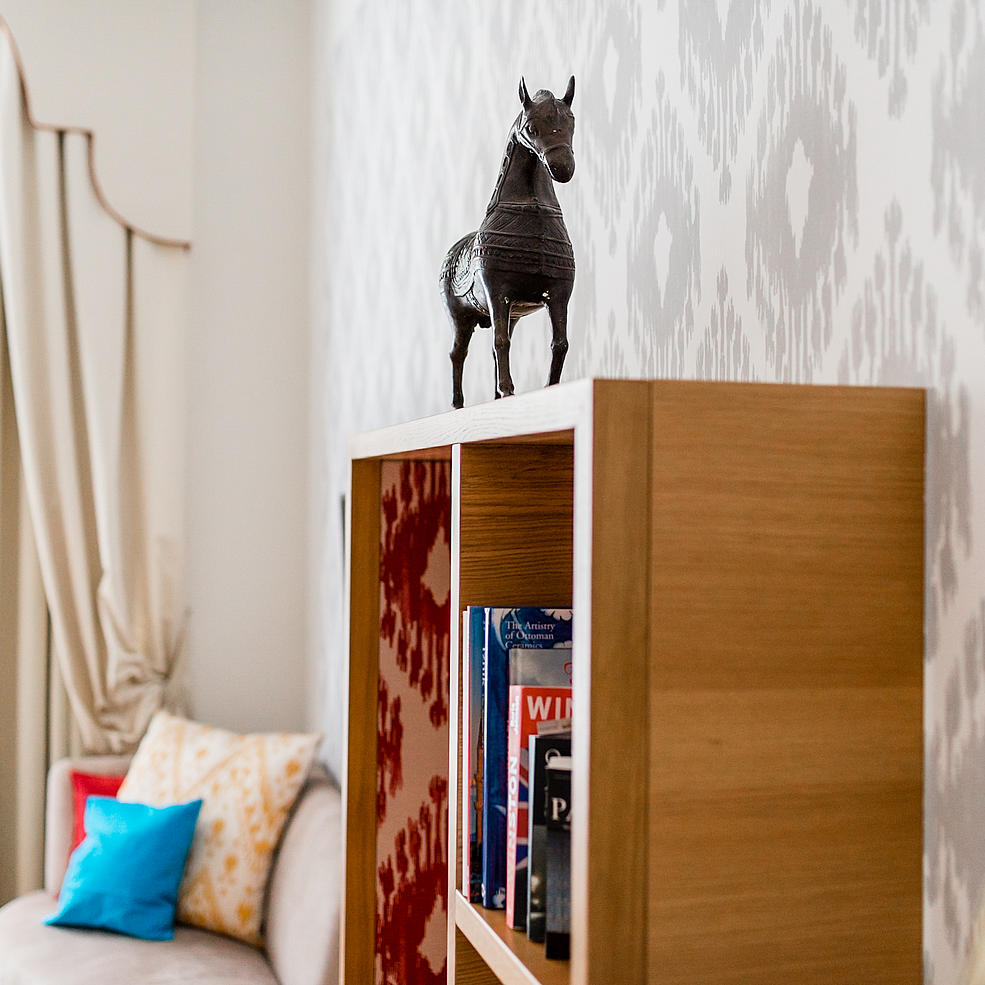
Why did you decide to collaborate with the Altstadt Vienna?
The Altstadt Vienna approached me and asked me if I would be willing to create a room or suite for the hotel. And I found the idea very appealing. I was here the next day and, since this was my very first time – to this point, I had only known Hotel Altstadt Vienna from the media and acquaintances – I had myself given the grand tour. I was excited. Truly a unique concept – in fact, I am not sure there is anything else quite like it in the world. It is something very original and also very Viennese, I would say.
How did the collaboration go? And what guidelines did the Altstadt Vienna give you?
The Altstadt Vienna actually gave me free rein. We went and took a look at the spaces, the few rooms that were to be designed. They wanted something that brought out my heritage, a hint of Turkish flair, in other words, which pleased me immensely. Something which, incidentally, you also find in my fashions. All of my collections have some Turkish element to them, given a modern interpretation, very European, very light and chic.
It is important for us to have a common thread running through the Altstadt Vienna. Which is why, we always have one request of our designers: The room should reflect their personal interpretation of the Viennese way on life. Where do we find that in what is actually a Turkish concept?
Well, of course, I immediately sat down for several conversations. Whenever I wasn’t traveling, I would regularly stop in at the Altstadt Vienna and we worked on a concept that would reflect and project a certain sense of warmth and that iconic Viennese Gemütlichkeit.
I am not the kind of designer who would do something totally crazy, so I really studied those things that make a hotel room most comfortable, plus I readily accepted a few suggestions from the Altstadt Vienna team as well. I then sketched a few ideas, in some cases very colorful at the outset, which we then reduced, constantly developing the ultimate concept. I thought that, somehow, it should represent modern Turkey – very much like the atmosphere you would feel on a yacht in the Aegean. On the one hand you should feel right at home, but on the other the rooms should exude an exotic feeling as well.
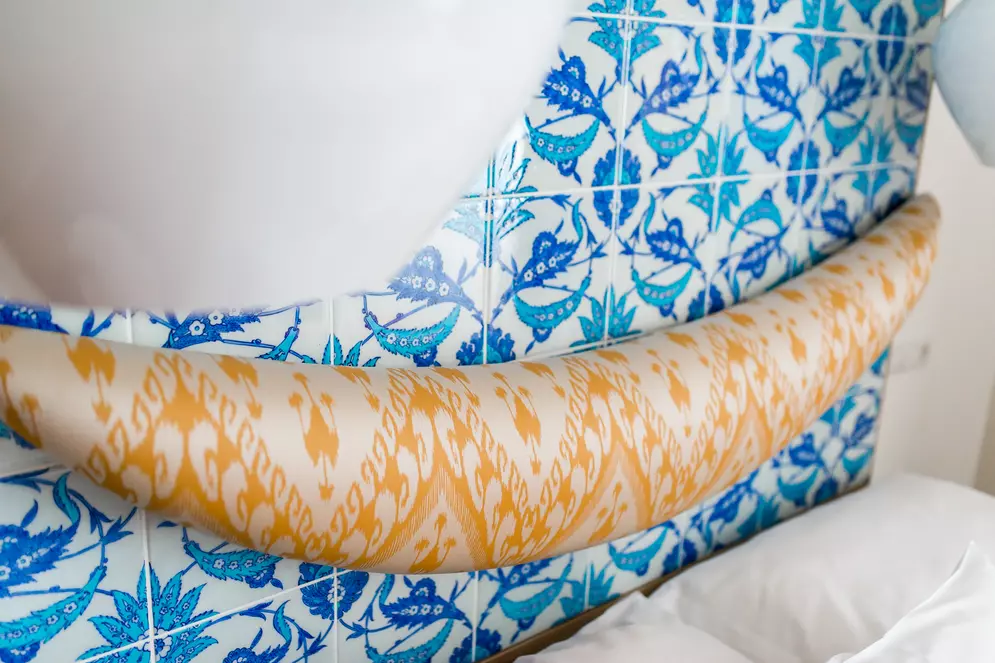
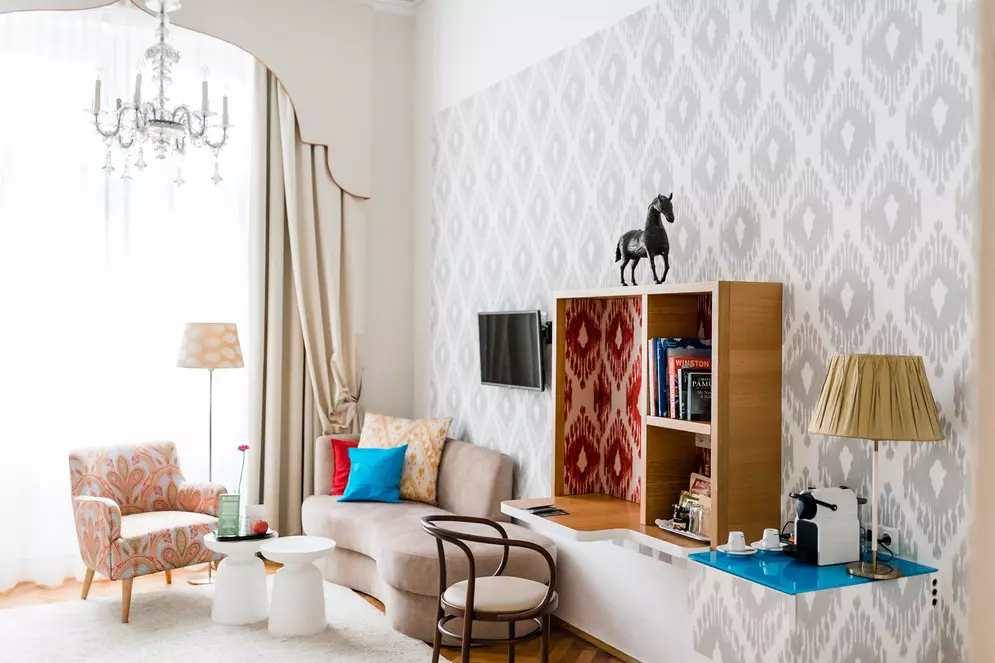
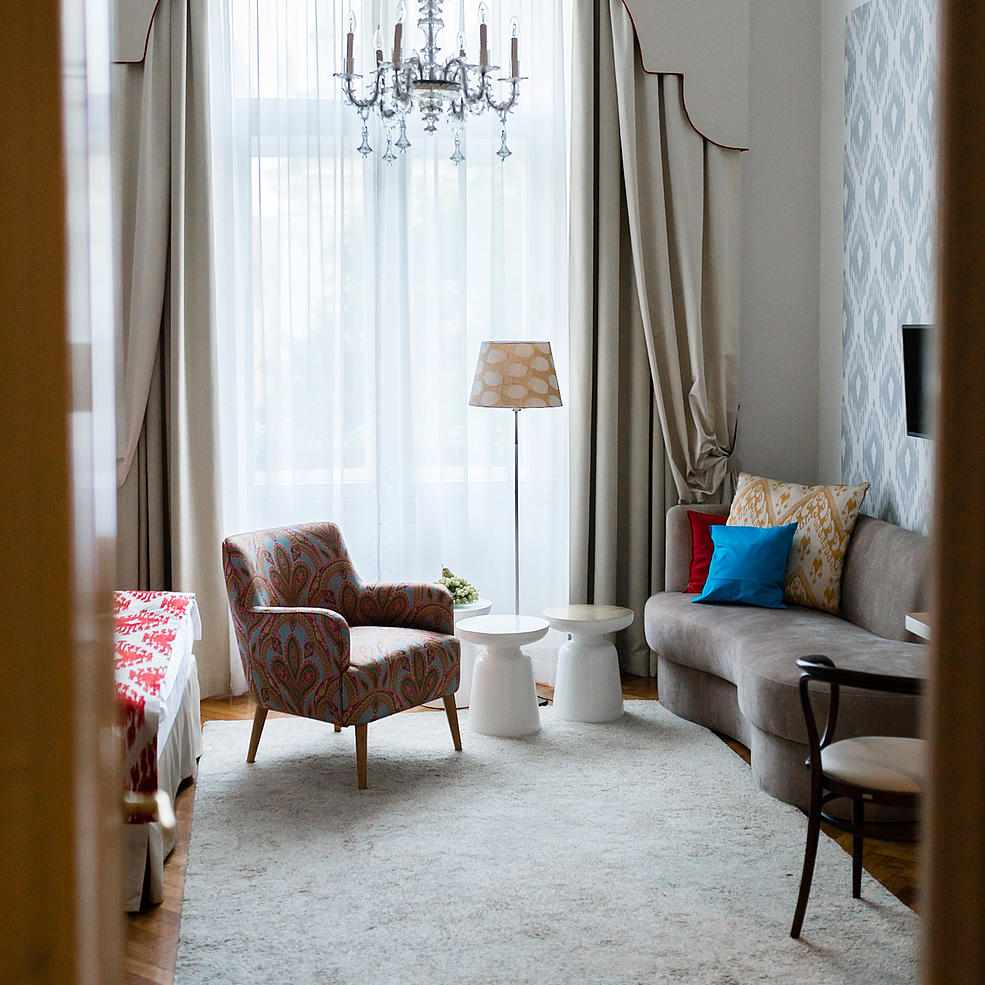
Much of what we consider to be part of Vienna's deeply rooted cultural heritage is actually more closely interwoven with Turkey than many realize. How have you tried to create connections and bridges between these two very different cultural milieus?
I would like to emphasize that the hotel team has a very cosmopolitan mindset, and the hotel itself is also very cosmopolitan. That said, Vienna as a whole is also exceptionally cosmopolitan. It has always been a melting pot of several cultures, of east and west, of the Orient and Occident. The Turkish culture, in particular, has very close ties to Vienna and Austria.
I know one painting of Empress Maria Theresia, for example, dressed in Turkish costume. And coffee, of course, came to Vienna, and thus to the rest of Europe, as one of the unexpected consequences of the Turkish siege of Vienna. Croissants, known as Kipferl here in Vienna, were originally designed by a Viennese baker in the shape of a crescent moon. There are all kinds of such legends and stories, and some of those are actually true. Which is why it was such exciting work for me to give these connections a contemporary signature and bring them to fruition. And that is also why I took this work very seriously, crafting the designs for several months. But in the end we were very satisfied with the initial concept.
And yes, indeed, it would have the air of a breeze from the Aegean, a touch of Istanbul, a hint of Topkapi, along with a modern view of life and the world. That is what makes this room so beautiful. Here, I have reconceived a gateway to the Topkapi palace, though when you draw back the curtain, you look out on St. Ulrich’s Church, on baroque Vienna. Making this room so international, so “worldly”. International, simultaneously a little oriental and Turkish. Which gives it a warmth, a feeling of home, and I think, as you look outside, you also appreciate having “Old Vienna” essentially right there at your doorstep. Including that beautiful church tower. Yet inside, a sense of the wide, wide world and wisps of Istanbul.
For you, this was the first professional interior design project. What parallels and differences did you encounter between fashion- and interior design?
I had previously designed a few furniture pieces and seating groups for a big, international Turkish fashion chain, and for myself personally. For my home in Istanbul and also here in Vienna. There are parallels between the fashion world and interior design. Proportion is very important. In order to achieve the appropriate aesthetic, you have to pay attention to the proportions, the interplay of colors and the harmony between form and color.
That applies to both worlds, to fashion and interior design. That said, good lighting also plays an important role in interior design. So I brought in professional assistance and I did my research as well. In designing this room, I played with oriental and Ottoman forms, reconceiving and reformulating them. We then found these two lamps at Tom Dixon, which greatly reminded me of the turbans of Turkish sultans. The gold is also very Ottoman, I feel.
Oriental design often feeds on strong colors. What can you tell us about the color composition of this room?
You are right. Colors are very important in the Orient. Warm colors. The colors of spices. And of course, blue and turquois are very much the colors of Asia Minor, of the Ottoman Empire. I transposed these to the Altstadt Vienna with the help of Iznik tiles. Also vibrant red is, for me, very oriental, the color of fire. Adding that to the mix gives the room both a certain warmth and domesticity.
What can you tell us about the different manufacturers and elements in the room?
The Iznik Foundation, they were the first I contacted, and they were immediately willing to add their support by means of their tiles. I find these Iznik tiles absolutely unique. Originals are frequently put up for auction in London and New York at horrendous prices. These particular Iznik tiles are made of porcelain and we were fortunate that the original Iznik Foundation supplied us with them. They were specially handmade close to Burza, where Iznik is located, also the birthplace of the Ottoman Empire. And so it was that we managed to bring together excellent elements and excellent quality for the Altstadt Vienna. They were also very proud that a design hotel in Vienna was going to be decorated with their products. To highlight them, we created a panel for the headboard above the bed.
The textile industry in Turkey helped me, too. They realized my wishes in short order, including some of the fabrics used in the room. Actually, most of the fabrics, some of which are reminiscent of the Ikat patterns, others of Ottoman caftans. Though all of these, I then reduced and modernized, since simply using them one-to-one would have been far too kitschy. It has a certain lightness, a European lightness. Also, the Turkish and Ottoman inspirations received a very young and very modern interpretation for the Altstadt Vienna. I feel this is very important nowadays, because, well, I’ve heard that this suite already has a number of fans – and it seems to me, it is very important to be in a European capital, yet to encounter a sense of points-east, in the direction of Istanbul, and to embark on a short, unexpected journey as you step into your room. For guests here, that is a feeling quite beyond compare.
The divan I am currently sitting on, for example, would fit right into any Turkish home. In every Ottoman palace, you will see divans in various corners. This is characteristic of Ottoman culture, which is why I wanted to decorate one corner with a divan, and I happily managed to make that happen. The divan was custom-manufactured for us by a furniture maker in Turkey.
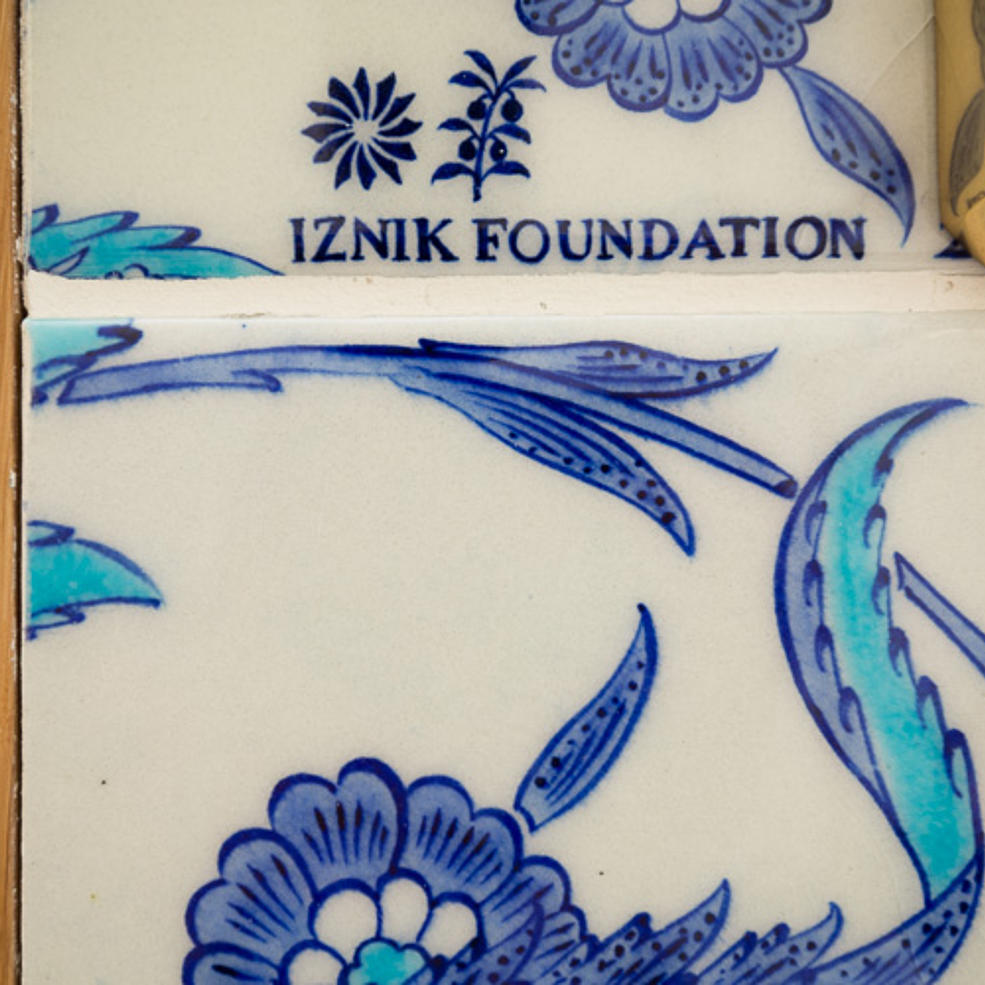
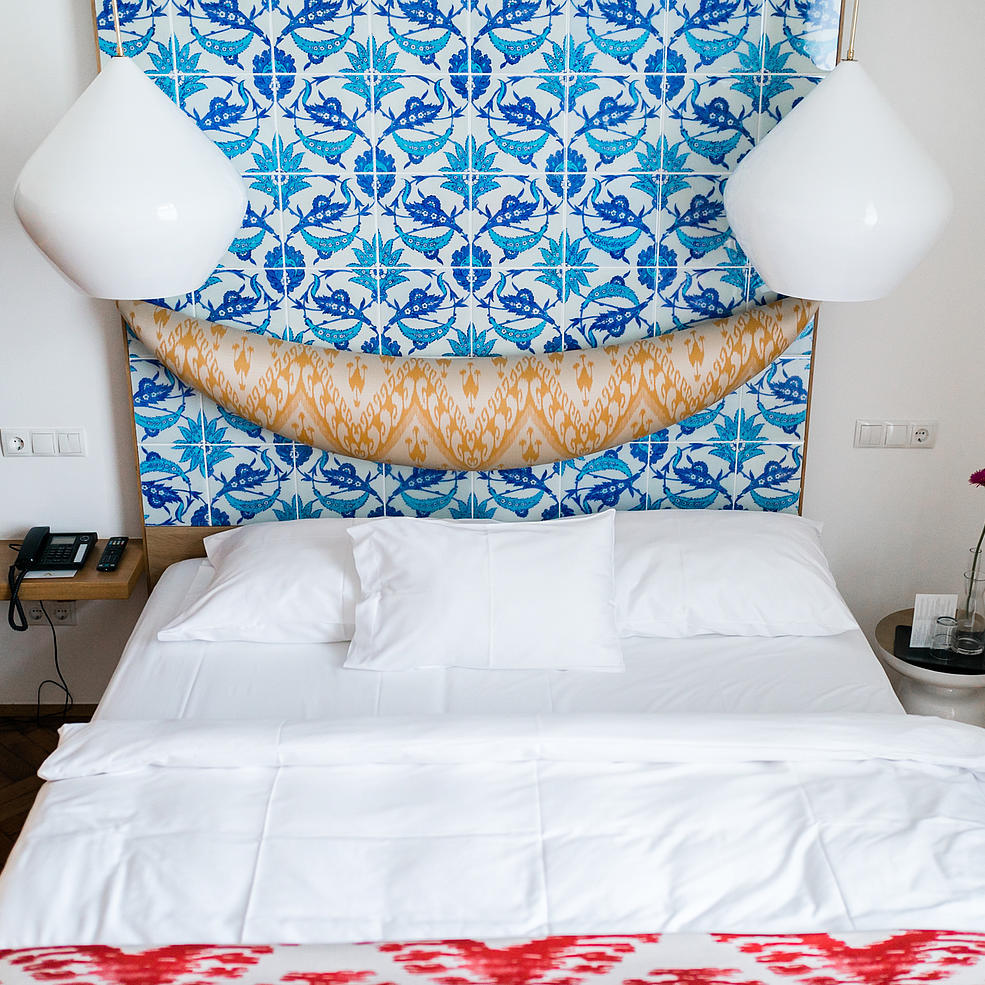
What kind of guest did you have in mind as you designed this room? Who should stay here?
As I designed this room, I thought of an aristocrat, potentially an Austro-Ottoman princess, with lineage going back to the Austrian as well as the Turkish monarchy. Though also very Jet Set in personality, young, living in Vienna, Istanbul, Paris, New York. Such a person visiting Vienna would stay in a room like this, at a hotel like this. That was my starting point, which explains the elegance and touch of gold. The chandelier is also an antique piece. But at the same time, the room needs to be modern, fresh, fashionable. I have made a few sketches of this princess, as she steps out of this hotel, perhaps heading to the Opera Ball.
Your fashion also tends to concentrate on women. That said, will this room also appeal to men?
But of course, this suite is intended for men as well as women. Even though I thought about my Ottoman-Austrian princess as I created my design, the furnishings of the room are actually very neutral. It would also appeal to any cosmopolitan man of the world who has an interest in art and culture, and the beautiful things in life.
What is important about a hotel room for you personally?
I travel a lot. For a number of years, I even lived at a hotel in New York. In Istanbul, even though I have a home there, I also lived in a hotel for a while. From my celebrity friends, artists and other professionals, I hear time and again how they feel very comfortable in a hotel setting. I find that the Altstadt Vienna manages to create that same atmosphere of ease, while simultaneously being uniquely different. Through its variety of rooms. No floor is like another, all rooms and suites have been designed by acclaimed Austrian and international architects and artists. When you stay at a hotel, you want to feel at home on the one hand, but on the other hand, you don’t. You want to feel comfortable and at ease, yet simultaneously immerse yourself in a whole different world, escaping all of the stresses of daily life and business. And that has succeeded wonderfully here. In my room especially.
How does this room differ from your personal lifestyle at home?
The room I have designed is actually very similar to how I live at home. I still don’t dare buy myself a boat, but I do dream of buying a yacht and living there some day. My bedroom there would look exactly like this living room. Conveying a sense of comfort, modernity and lightness, yet elegant and noble.
Thank you for the interview.

